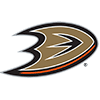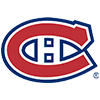We're not done. The last episode finished with four players from the group of 30-point pitchers, a 12-player cohort that is characterized by pitchers who carry relatively extreme strengths and weaknesses.
Here's a quick review of the rankings:
Introduction to the ratings
Rating NFBC SP 1-10
Rating NFBC SP 11-21
Rating DT SP 22-30 (and 19)
Rating DT SP 31-40
Rating DT SP 41-50
It's just a footnote on the rankings, but it is interesting that only one of the 20 previously-ranked pitchers received an "8" in the strikeouts category, and in fact only three others scored as many as 7 points in the subject, yet today's set leads off with three different pitchers who each scores 7-to-8 points for projected K rate. To descend to this level, however, these pitchers all carry significant warts that are weighing down their respective values.
Blake Snell
NFBC ADP: 79
DT Rank: 51
| K | 8 of 10 |
| ERA | 4 of 6 |
| WHIP | 2 of 6 |
| W | 2 of 3 |
| IP | 5 of 10 |
| Stuff | 6 of 8 |
| Mechanics | 3 of 7 |
| TOTAL | 30 of 50 |
We're not done. The last episode finished with four players from the group of 30-point pitchers, a 12-player cohort that is characterized by pitchers who carry relatively extreme strengths and weaknesses.
Here's a quick review of the rankings:
Introduction to the ratings
Rating NFBC SP 1-10
Rating NFBC SP 11-21
Rating DT SP 22-30 (and 19)
Rating DT SP 31-40
Rating DT SP 41-50
It's just a footnote on the rankings, but it is interesting that only one of the 20 previously-ranked pitchers received an "8" in the strikeouts category, and in fact only three others scored as many as 7 points in the subject, yet today's set leads off with three different pitchers who each scores 7-to-8 points for projected K rate. To descend to this level, however, these pitchers all carry significant warts that are weighing down their respective values.
Blake Snell
NFBC ADP: 79
DT Rank: 51
| K | 8 of 10 |
| ERA | 4 of 6 |
| WHIP | 2 of 6 |
| W | 2 of 3 |
| IP | 5 of 10 |
| Stuff | 6 of 8 |
| Mechanics | 3 of 7 |
| TOTAL | 30 of 50 |
The mechanics are another issue, but they underlie his high walk rates. Snell has a lot of lateral imbalance in his delivery, carves an inefficient path of momentum and tilts into release point, often falling off the mound to the third-base side during his follow-through. Snell essentially carves an S-shaped pattern that is directed toward the left-hand batter's box during his stride, and the redirects the curve toward the right-hand batter's box from foot strike through release point. The pattern is difficult to repeat and impact Snell's pitch command, but if he can straighten things out then he could approach his lofty ceiling.
The 8 points in strikeouts is an optimistic score, considering that he had a frequency of 24.4 percent strikeouts last season (though 9.9 K/9). However, in the minors Snell struck out 33.3 percent of the 441 batters that he faced at the Triple-A level over a two-year stretch. I'm holding out for the upside, but bear in mind that the next time that shows command of the strike zone will be his first.
Robbie Ray
NFBC ADP: 64
DT Rank: 52
| K | 7 |
| ERA | 3 |
| WHIP | 2 |
| W | 2 |
| IP | 6 |
| Stuff | 5 |
| Mechanics | 5 |
| TOTAL | 30 |
His strikeouts were even more impressive on a per-inning basis (11.3 K/9) last season, but the 4.08 pitches that he threw per batter was tied for second in the National League, and given the high WHIP he was working hard to get through innings. All of his velocities shot up in 2016, and his pitches got faster as the season progressed - all of his pitches gained 1-2 ticks when compared to 2015. At his best, Ray has solid balance and a great path of momentum to funnel his powerful delivery, providing a glimpse of a potential breakout if he can master his own motion.
Michael Pineda
NFBC ADP: 63
DT Rank: 53
| K | 8 |
| ERA | 2 |
| WHIP | 3 |
| W | 2 |
| IP | 6 |
| Stuff | 4 |
| Mechanics | 5 |
| TOTAL | 30 |
Gio Gonzalez NFBC ADP: 91 DT Rank: 54| K | 8 |
| ERA | 3 |
| WHIP | 2 |
| W | 2 |
| IP | 6 |
| Stuff | 5 |
| Mechanics | 6 |
| TOTAL | 30 |
Luke Weaver NFBC ADP: 80 DT Rank: 55| K | 7 |
| ERA | 3 |
| WHIP | 4 |
| W | 2 |
| IP | 4 |
| Stuff | 5 |
| Mechanics | 5 |
| TOTAL | 30 |
Francisco Liriano NFBC ADP: 83 DT Rank: 56| K | 7 |
| ERA | 4 |
| WHIP | 3 |
| W | 2 |
| IP | 6 |
| Stuff | 5 |
| Mechanics | 3 |
| TOTAL | 30 |
Ian Kennedy NFBC ADP: 73 DT Rank: 57| K | 6 |
| ERA | 3 |
| WHIP | 3 |
| W | 2 |
| IP | 7 |
| Stuff | 4 |
| Mechanics | 5 |
| TOTAL | 30 |
Jerad Eickhoff
NFBC ADP: 58
DT Rank: 58
| K | 5 |
| ERA | 4 |
| WHIP | 4 |
| W | 2 |
| IP | 7 |
| Stuff | 4 |
| Mechanics | 4 |
| TOTAL | 30 |
With our dozen 30-point players now out of the way, let's look at the players at the top of the 29-point pool.
Tyler Glasnow
NFBC ADP: 96
DT Rank: 59
| K | 7 |
| ERA | 4 |
| WHIP | 3 |
| W | 2 |
| IP | 3 |
| Stuff | 5 |
| Mechanics | 5 |
| TOTAL | 29 |
Joe Ross NFBC ADP: 62 DT Rank: 60| K | 6 |
| ERA | 4 |
| WHIP | 4 |
| W | 2 |
| IP | 3 |
| Stuff | 5 |
| Mechanics | 5 |
| TOTAL | 29 |
Here are my top-60 starting pitchers:
























